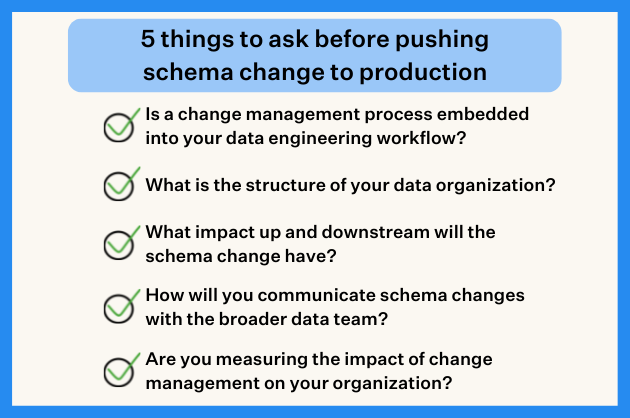Data Warehouse vs Data Lake vs Data Lakehouse: Definitions, Similarities, and Differences

Modern companies are ingesting, storing, transforming, and leveraging more data to drive more decision-making than ever before. At the same time, 81% of IT leaders say their C-suite has mandated no additional spending or a reduction of cloud costs.
Data teams need to balance the need for robust, powerful data platforms with increasing scrutiny on costs. That’s why it’s essential for teams to choose the right architecture for the storage layer of their data stack.
But, the options for data storage are evolving quickly. Different vendors offering data warehouses, data lakes, and now data lakehouses all offer their own distinct advantages and disadvantages for data teams to consider.
So let’s get to the bottom of the big question: what kind of data storage layer will provide the strongest foundation for your data platform? Let’s dive in.
Understanding data warehouses
A data warehouse is a consolidated storage unit and processing hub for your data. Teams using a data warehouse usually leverage SQL queries for analytics use cases.
Typically, data warehouses work best with structured data defined by specific schemas that organize your data into neat, well-labeled boxes. This same structure aids in maintaining data quality and simplifies how users interact with and understand the data.
One advantage of data warehouses is their integrated nature. As fully managed solutions, data warehouses are designed to offer ease of construction and operation. A warehouse can be a one-stop solution, where metadata, storage, and compute components come from the same place and are under the orchestration of a single vendor. Some of the well-known players in the data warehouse sphere include Amazon Redshift, Google BigQuery, and Snowflake.
Data warehouses are often the most sensible choice for data platforms whose primary use case is for data analysis and reporting. With pre-built functionalities and robust SQL support, data warehouses are tailor-made to enable swift, actionable querying for data analytics teams working primarily with structured data.
Exploring data lakes
A data lake is a reservoir designed to handle both structured and unstructured data, frequently employed for streaming, machine learning, or data science scenarios. It’s more flexible than a data warehouse in terms of the types of data it can accommodate, ranging from highly structured to loosely assembled data.
While data lake vendors are constantly emerging to provide more managed services — like Databricks’ Delta Lake, Dremio, and even Snowflake — traditionally, data lakes have been created by combining various technologies. For metadata organization, they often use Hive, Amazon Glue, or Databricks. Storage can utilize S3, Google Cloud Storage, Microsoft Azure Blob Storage, or Hadoop HDFS. Compute tasks might run on Apache Pig, Hive, Presto, or Spark. Commonly, you’ll find data formats such as JSON, Apache Parquet, and Apache Avro in these environments.
Data lakes offer data engineering teams the freedom to select the right technologies for metadata, storage, and computation based on their unique requirements. So, as your data needs scale, your team can easily customize your data lake strategy by integrating new elements of your data stack.
Data lakes also typically decouple storage and compute, which can enable cost savings while facilitating real-time streaming and querying. They also encourage distributed computation for enhanced query performance and parallel data processing.
The flexibility isn’t just about malleability in tech choices. Data lakes can work with raw or lightly structured data, providing a valuable advantage to data teams when dealing with different forms of data. And data lakes can support sophisticated non-SQL programming models, such as Apache Hadoop, Apache Spark, PySpark, and other frameworks. This is particularly useful to data scientists and engineers as it provides more control over their calculations.
Traditionally, data lakes have been an ideal choice for teams with data scientists who need to perform advanced ML operations on large amounts of unstructured data — usually, those with in-house data engineers to support their customized platform. But user-friendly, managed solutions are making this approach less reliant on data engineers to build capabilities from the ground up.
Introducing data lakehouses
Like “brunch” and “Bennifer”, data lakehouses are the portmanteau of the data warehouse amd data lake. They stitch together the features of a data warehouse and a data lake, fusing traditional data analytics technologies with advanced functionalities, such as machine learning capabilities.
The inception of the data lakehouse came about as cloud warehouse providers began adding features ordinarily associated with lakes, as seen in platforms like Redshift Spectrum and Delta Lake. Conversely, data lakes began incorporating warehouse-like features, such as including SQL functionality and schema definitions.
Distinct functionalities offered by data lakehouses increasingly blur the lines between the two structures. Presto and Spark technologies have ushered in high-performance SQL, providing nearly interactive speeds over data lakes. This innovation creates the possibility for data lakes to serve analysis and exploration directly, eliminating the need for summarization into traditional data warehouses.
File formats like Parquet have introduced more stringent schema to data lake tables, alongside a columnar format for improved query efficiency. To further bridge the gap, technologies like Delta Lake and Apache Hudi have brought greater reliability in write/read transactions to data lakes. This nudges them closer to the prized ACID (Atomicity, Consistency, Isolation, Durability) characteristics that are intrinsic to conventional database technologies.
Additionally, for teams looking to minimize the complexity of building and managing a data lake, various managed lake services are now on offer from cloud providers. For instance, Databricks offers a managed version of Apache Hive, Delta Lake, and Apache Spark. Amazon Athena provides a fully managed lake SQL query engine, and Amazon’s Glue brings a fully managed metadata service.
In essence, data lakehouses are making strides in combining the benefits of both worlds, offering an interesting and viable alternative for businesses dealing with diverse data.
Comparing data warehouses, data lakes, and data lakehouses
Data warehouses, data lakes, and data lakehouses all offer distinct advantages for distinct use cases. If your data stack supports a team of data scientists working with raw, unfiltered information, you’ll need a different approach than a corporate setup requiring regimented and clean data for BI tools. (Or maybe both.)
In a nutshell, data warehouses store structured data for analytics. Data lakes handle both structured and unstructured data, often for advanced analytics. Lakehouses combine the two, offering analytics flexibility with diverse data types.
In the sections that follow, we’ll delve into key considerations like understanding your primary users and performance requirements. Then, you’ll be armed with the right questions to find the best answer for your team.
Know who your core users will be
“One size fits all” doesn’t apply when it comes to data warehousing vs. data lakes. The preferred option among a data warehouse, data lake, and a data lakehouse must correspond with the proficiency levels, needs, and workflow of your users.
For instance, business intelligence teams often find structured data more convenient for reporting and analysis purposes, making a data warehouse a logical choice. In contrast, a data lake’s ability to handle raw and unfiltered data might be more attuned with the needs of data scientists seeking to run advanced calculations and data exploration. A data lakehouse, on the other hand, could offer the best of both worlds to a diverse set of users with varying skillsets.
It’s all about selecting the option that grants your users the most efficient and effective access to data, according to their individual requirements and skills.
Scalability and performance considerations
Next, consider your data itself: do you work with structured or unstructured data, or both? Do you want to clean and process data before storage, or leave it raw for advanced ML operations? Or both? And what kinds of budget constraints do you foresee? All these scalability and performance factors will inform your choice of data warehouse, lake, or lakehouse.
Structure and schema
Traditionally, data lakes excel at storing vast amounts of raw data — be it structured, semi-structured, or unstructured, without any specific constraints. Data warehouses, on the other hand, thrive on order, maintaining precise storage and organization of data with corresponding metadata. However, these distinctions are becoming less defined, and data lakehouses usually offer more flexibility to support both structured and unstructured data.
For instance, companies like Databricks have allowed users to add structure and metadata to their data lakes with features like Unity Catalog and Delta Lake. Similarly, Snowflake has brought Apache Iceberg tables into play, blending the reliability of SQL tables and making it possible for various engines to work concurrently on the same tables. This convergence is making the scalability and performance considerations more nuanced than ever.
A crucial factor is understanding your company’s regular data usage patterns. If you lean on a limited number of data sources for specific workflows consistently, building a data lake from scratch might not be the optimal route considering time and resources. However, if your company employs multiple data sources to drive strategic decisions, a hybrid lakehouse architecture could offer fast, insightful data access to users across various roles.
Data integration and processing capabilities
In a data warehouse, data from various sources is cleaned, integrated, and processed before storage. This offers proactive data quality management, making it highly efficient for routine processing tasks such as reporting and extracting business insights. However, such extensive preprocessing might limit flexibility for complex, ad-hoc analyses.
A data lake stores raw data, leaving the processing part until the data is read for use (also known as schema-on-read). This flexibility allows for complex, real-time processing and is particularly useful for advanced analytics, machine learning and AI. But it may require more processing power and longer processing times depending on the volume and complexity of data.
A data lakehouse attempts to get the best of both worlds. It allows the storage of raw data like a data lake, while also facilitating the option for preprocessed, structured data like a warehouse. This combination can improve processing time and efficiency without compromising flexibility.
Cost implications and resource requirements
Data warehouses, while highly efficient for structured data and routine business queries, can carry substantial costs, especially when scaling up. They typically require a significant upfront investment in both financial terms and time, as they entail complex setup and maintenance procedures.
Data lakes, in contrast, are usually more affordable and scalable because they use commodity hardware for storing massive amounts of raw data. They’re generally less costly as far as storage is concerned, but operating expenses might escalate if the data needs complex processing or faces quality issues. Plus, they may require a team with specialized skills for managing and extracting value from the raw, unregulated data.
The data lakehouse model includes components of both data warehouses and data lakes. It offers more flexibility and can be a cost-effective solution, catering to a wider variety of data usage scenarios without separate setups for a warehouse and a lake. However, they may still require significant resources in terms of setup, maintenance, and skilled personnel.
Convergence and recent product innovations
The data lakehouse itself is a relatively new innovation. And with the rise of data streaming to inform real-time analytics, this hybrid approach is likely to become more popular and relevant for data teams across industries in the coming years. Two major contenders are leading the way in developing flexible data storage solutions: Databricks and Snowflake.
Databricks’ innovations and contributions
Within the last decade, Databricks has emerged as a clear leader — first, in data lakes, and more recently, with their Databricks Lakehouse. Features like the Unity Catalog have helped bring more structure to Databricks users, without compromising on flexibility and speed.
Databricks also continues to push the data lakehouse framework forward by adding more flexibility to their open-source Delta Lake technology, such as enabling teams to use table formats like Delta, Hudi, and Iceberg with Delta Lake 3.0.
And at their recent conference, Databricks announced the launch of LakehouseIQ, an AI-powered knowledge engine that allows users to search, understand, and query data with natural language. This development promises to bring important business context to help more stakeholders access and use data in decision-making, considerably expanding the potential applications (and user base) of Databricks’ lakehouse solution.
Snowflake’s innovations and contributions
Of course, no company has made a greater impact on the modern data warehouse than Snowflake. After they launched in the early 2010s, using the cloud to store and manage data became the standard for modern data teams. And Snowflake continues to drive the data warehouse vs. data lake paradigm forward.
Snowflake now supports data lakes by allowing data teams to work with a variety of data types, including semi-structured and unstructured data. The company considers itself a “data cloud”, or a hybrid of data warehouse and data lake architectures — decidedly not a data lakehouse, which it describes as falling short due to challenges like complexity, hidden costs, and variable performance.
And in their recent Snowflake Summit, company leaders highlighted a few new features and expansions that will continue to impact how the industry thinks about data warehouses, lakes, and lakehouses, including:
- Unified Iceberg Tables, which provide a single mode to interact with external data
- Document AI, which uses a proprietary large language model to extract and understand unstructured data
- Dynamic Tables and Snowpipe Streaming, which simplify streaming data pipelines
Impact of innovations on data management and analytics landscape
These innovations from leaders like Databricks and Snowflake are continuing to blur the lines between data warehouses and data lakes. And this evolution makes sense in the larger context of the growing number of data-driven businesses: as organizations continue to ingest and leverage more types of data from more sources, they need technologies that can support their growth. Structured and unstructured, batch and streaming — all these varied use cases need to be supported by data platforms.
This is driving vendors to create more cost-effective solutions that don’t compromise on performance, and data giants like Snowflake and Databricks seem to be in an arms race to become the one-size-fits-all solution to tackle compute and processing needs for all sizes of businesses. The landscape is an exciting one, and especially with the possibilities introduced by AI, we can’t wait to see how data warehouses, lakes, and lakehouses evolve in the next few years.
Don’t forget: data quality and data observability
One thing that won’t change anytime soon: companies need to have trust in their data, no matter where or how it’s stored.
Regardless of who your stakeholders are or what your performance needs might be, you do want to make sure your data warehouse, lake, or lakehouse supports data quality. Knowing that your data is accurate, fresh, and complete is crucial for any decision-making process or data product. When data quality suffers, the outcomes can lead to wasted time, lost opportunities, lost revenue, and erosion of internal and external trust.
While a modern approach to data governance and extensive data testing can help improve data quality, the best teams are leveraging data observability across their entire data stack. Data observability provides end-to-end monitoring and alerting for issues in your data pipelines, across any warehouse, lake, or lakehouse that stores your data of all types.
By analyzing historical patterns while incorporating custom rules and thresholds, data observability can ensure the right data team is the first to know when data issues occur. Coupled with automated field-level lineage, this ensures that data downtime is kept to a minimum, impacted stakeholders are easily informed of potential issues, and data quality is maintained throughout the data lifecycle.
Warehouse, lake, or lakehouse: data observability helps protect your investment in your data, wherever it’s stored. To learn more, contact our team to see how data observability fits into your data storage solution.
Our promise: we will show you the product.
 Product demo.
Product demo.  What is data observability?
What is data observability?  What is a data mesh--and how not to mesh it up
What is a data mesh--and how not to mesh it up  The ULTIMATE Guide To Data Lineage
The ULTIMATE Guide To Data Lineage 





